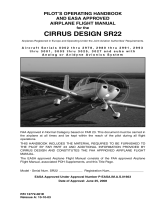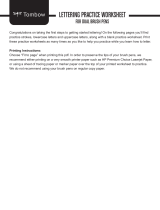
ii
Garmin GNS 530/430 Sample Training Syllabus and Flight Lessons
190-00334-00 Rev. A
1
Garmin GNS 530/430 Sample Training Syllabus and Flight Lessons
190-00334-00 Rev. A
In ight schools, ying clubs and aircraft rental organizations, pilots are often required to learn how to operate the vari-
ous types and makes of avionics installed in the rental eet. In most cases, no specic training is provided on this equip-
ment other than for rudimentary operation and minimum functions; in some cases no training is provided at all.
In modern aircraft, a number of new navigation techniques and pieces of equipment are available that are designed to
enhance the safety of ight operations in visual and instrument meteorological conditions. Advances in navigation tech-
nology can provide the greatest benets in situational awareness and help reduce the cost of ight operations by allowing
more direct routes and simplied approach procedures.
Of all of these advances, none of them alone can bring about a major change in the accident rate of general aviation air-
craft. Pilot training and periodic evaluation is the key to realizing the safety benets of new technology and reducing ac-
cident rates. The combination of technology and pilot training will help increase safety, lower insurance costs and improve
the public perception of general aviation.
Overview
The enclosed sample syllabi and lesson plans are provided as part of the FAA – Industry Training Standards program
(FITS). This information is designed to be incorporated into existing ight training/aircraft checkout/recurrent qualica-
tion programs.
The syllabi and lesson plans are valid for both GNS 530 and GNS 430 series Garmin avionics. There are 3 main train-
ing types that this material may be used for: home study, ight checkout and recurrent.
The home study portion is designed to prepare the pilot for use of the avionics and to maximize the ight training seg-
ment that follows. This part of the materials is for use with any pilot who plans to y aircraft equipped with GNS 530/430
avionics. It can be incorporated in any stage of pilot training, including private pilot, instrument and commercial as well
as aircraft checkouts and recurrent training, instrument prociency checks (IPCs), and ight reviews.
The ight training segments emphasize scenario-based training. These ights are designed to be cross-country ights
resembling normal ight operations. The en-route segment is ideal for standard air work and provides an opportunity to
train a pilot in both VFR and simulated IFR conditions quickly. It challenges the pilot’s ability to respond to a suddenly
increased workload while testing his or her ability to properly use the avionics systems.
The recurrent training portion uses the same sample enclosed materials for use in conjunction with insurance qualica-
tions, IPCs, or ight reviews and is equally well suited for each. The structure remains the same and is based around the
home study review of the avionics in preparation for the ight segment. It encourages use of all system capabilities which,
depending on the pilot’s typical ight operations, may not be used in the normal course of the ight.
These lessons are only sample lesson plans and are designed to be used in conjunction with other programs. Sugges-
tions and recommendations are welcome and will be taken into consideration in future document revisions. Comments/
suggestions can be sent via e-mail to the Garmin FITS Pr
ogram Manager at:
CFI_T[email protected].Disclaimer:
These documents are samples only and are provided solely as tools to help Certied Flight Instructors
develop their own training programs. It is also the sole responsibility of the CFI and pilot in training to
ensure that training is completed to an appropriate level of prociency.
INTRODUCTION
I






















